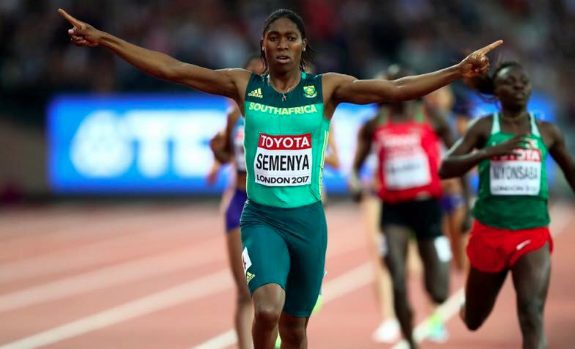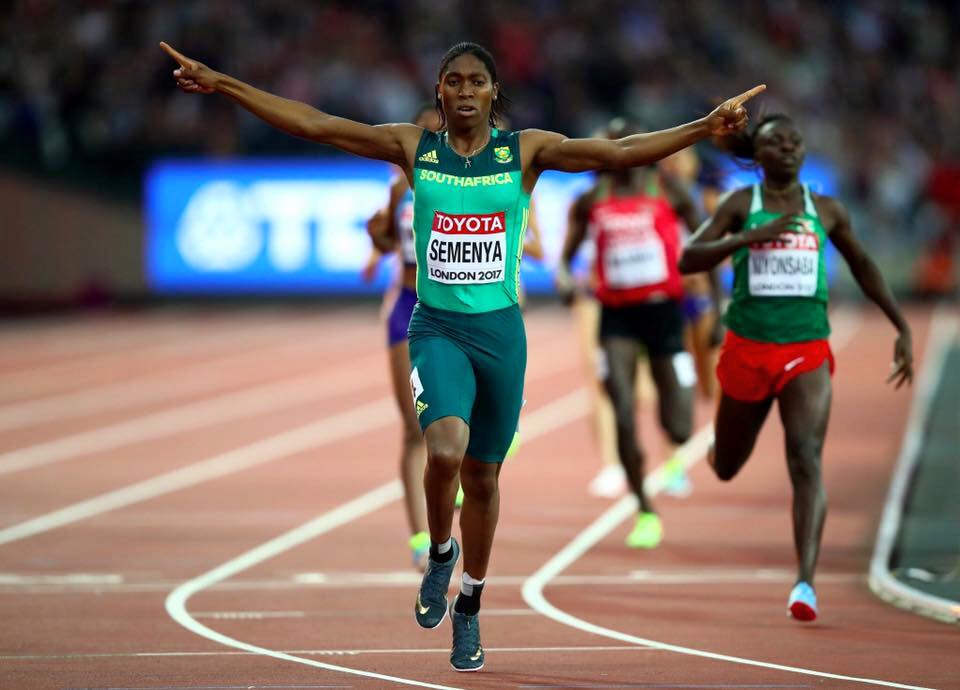What’s next for Caster Semenya?
Here are the options the 800m champion may be considering, now that the IAAF testosterone rule is in effect

The IAAF’s controversial testosterone rule, which went into effect yesterday after being upheld by the CAS (Court of Arbitration for Sport) last week, now means that South African 800m runner Caster Semenya may no longer compete at that distance at world championships or Olympics without taking medication to artificially lower her testosterone. The CAS decision has provoked heated debate on both sides–those who think Semenya should be allowed to race her chosen distance without conditions, and those who believe her naturally high levels of testosterone give her an unfair advantage over other women. While the two sides become more and more deeply entrenched, many are speculating about what Semenya will do next.
RELATED: Caster Semenya and testosterone: did the CAS get it right?

The debate over Semenya and her testosterone levels goes back to her first appearance on the track scene in 2009, when she won gold at the world championships in 1:55.45, and it was later revealed that she had been subjected to sex testing by the IAAF and deemed ineligible to compete for 11 months.
— Caster Semenya (@caster800m) May 8, 2019
What are her options?
One of Semenya’s first responses was to squeeze in a race before the May 8 deadline took effect. (The IAAF required athletes with DSD, or differences in sexual development, resulting in naturally high levels of testosterone, to begin taking medication to lower their testosterone by that date to be eligible to race distances of 400m to the mile in the female classification at world championships in September.)
After winning what may have been her last 800m at Doha Diamond League on May 3 (and setting a new meet record of 1:54.98), Semenya’s response when asked if she intended to comply with the rule and start taking oral contraceptives to lower her hormone levels was “Hell, no.”
— Caster Semenya (@caster800m) May 7, 2019
She also indicated she would not consider moving up to the 5,000m (which is not covered by the rule), despite racing the distance recently at the South African national championships and prompting many to speculate that she may be resigned to changing distances in order to avoid the testosterone rule. (She could also opt to move down to the 200m distance, which also is not covered by the rule, but this seems unlikely.)
— Caster Semenya (@caster800m) May 3, 2019
Semenya has often raced the 1,500m distance successfully (she won bronze at the 2017 world championships and gold at last year’s Commonwealth Games), but the 1,500 is also covered by the testosterone rule, even though the IAAF has so far been unable to provide clear evidence of any advantage to women with high testosterone at this distance. (CAS asked the IAAF to consider delaying implementation of the rule in the 1,500m, but it refused.)
Other options that have been suggested are that she could race in the men’s classification, though few people believe this is a real option, for a host of reasons (including that her PB of 1:54.25 is not competitive even with those of the top five high school boys at OFSAA in 2018, let alone men).
Semenya has maintained an attitude of quiet determination in interviews and on Twitter in the days since the decision came down. Since she insists that her future in the sport remains with the 800m distance, it seems likely she is planning to appeal CAS’s decision to the Swiss Supreme Court, though a CBC report claims the grounds for appeal are limited. The deadline of 30 days from the date of the original decision (May 1) is May 31.


